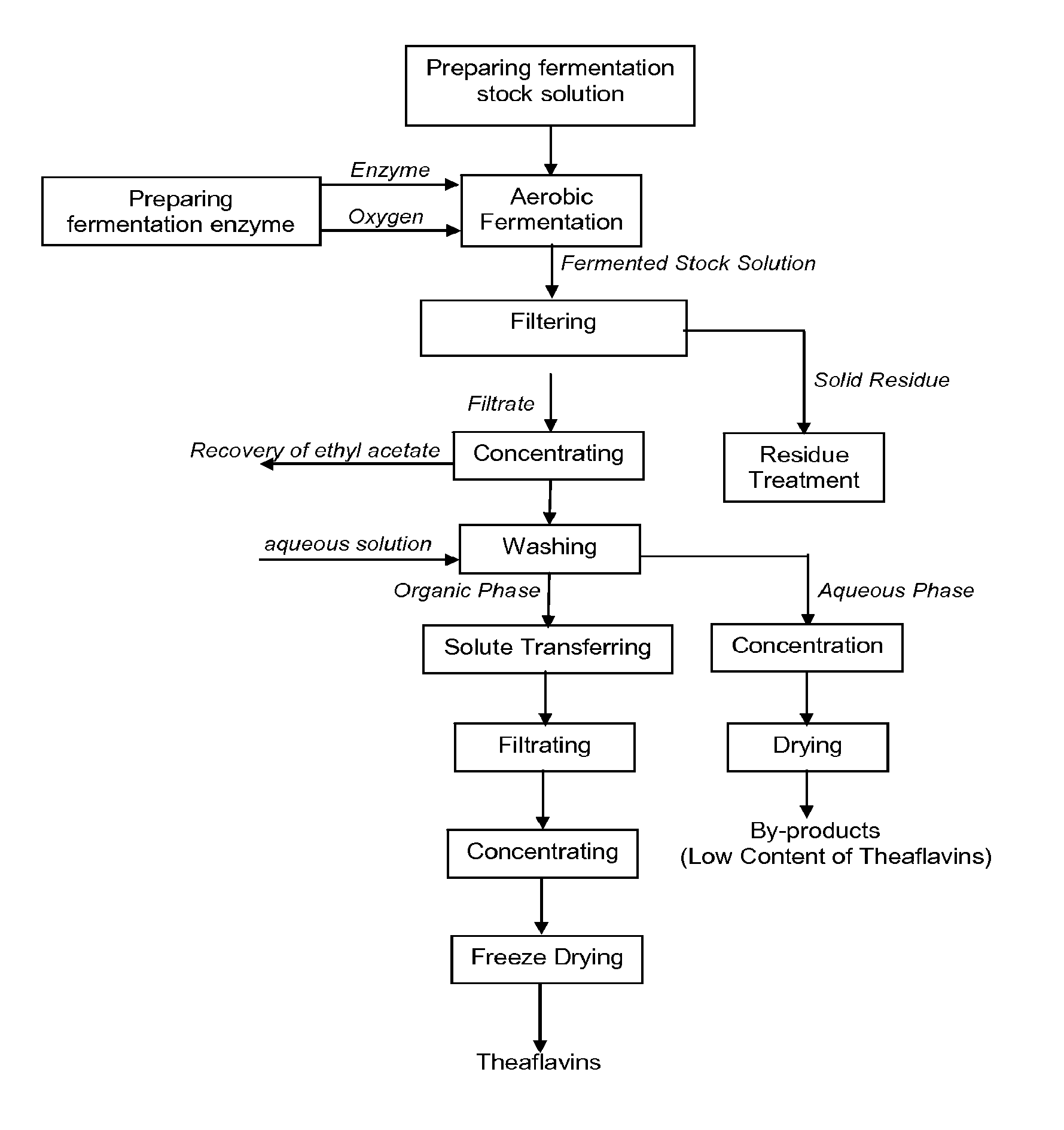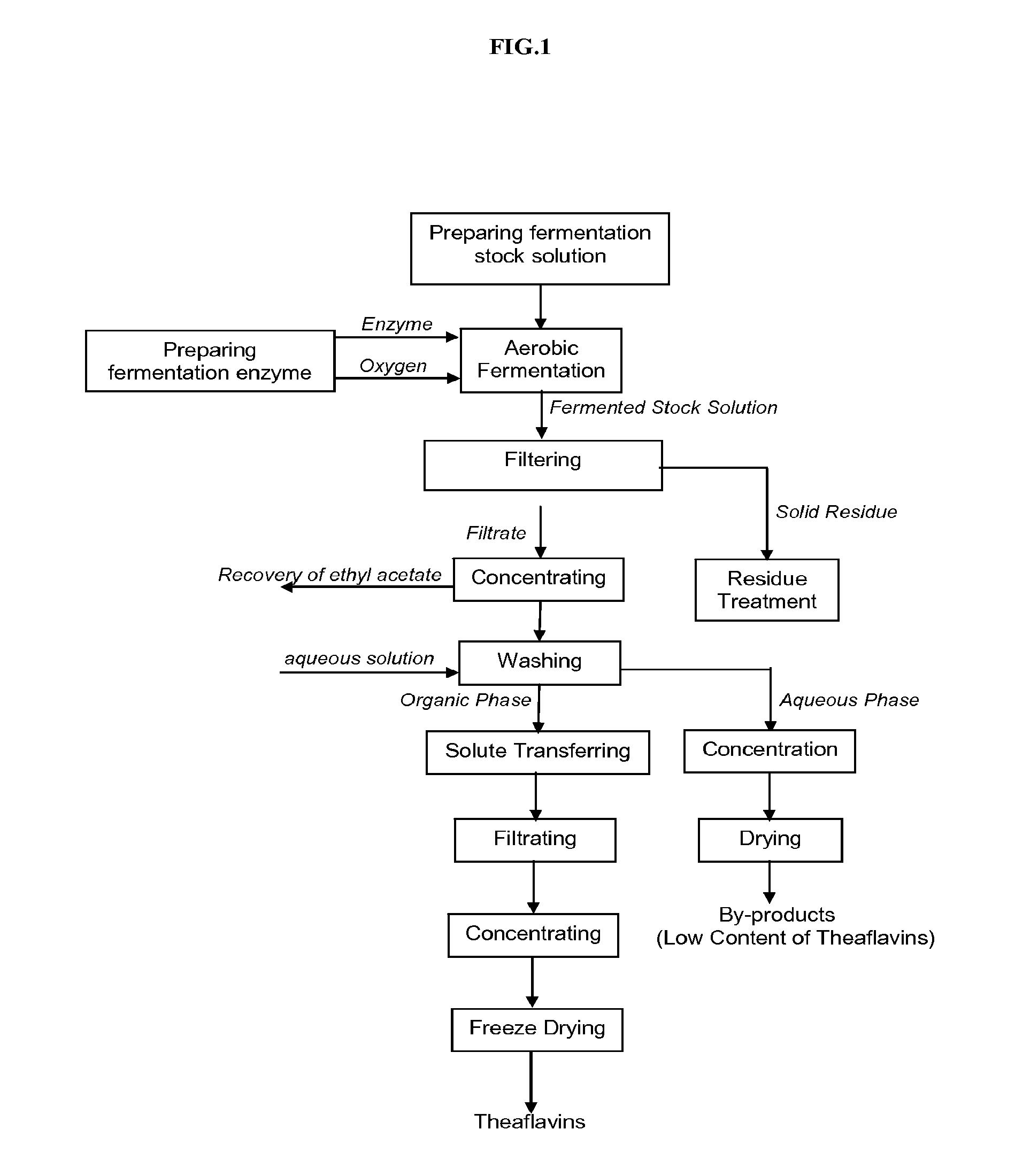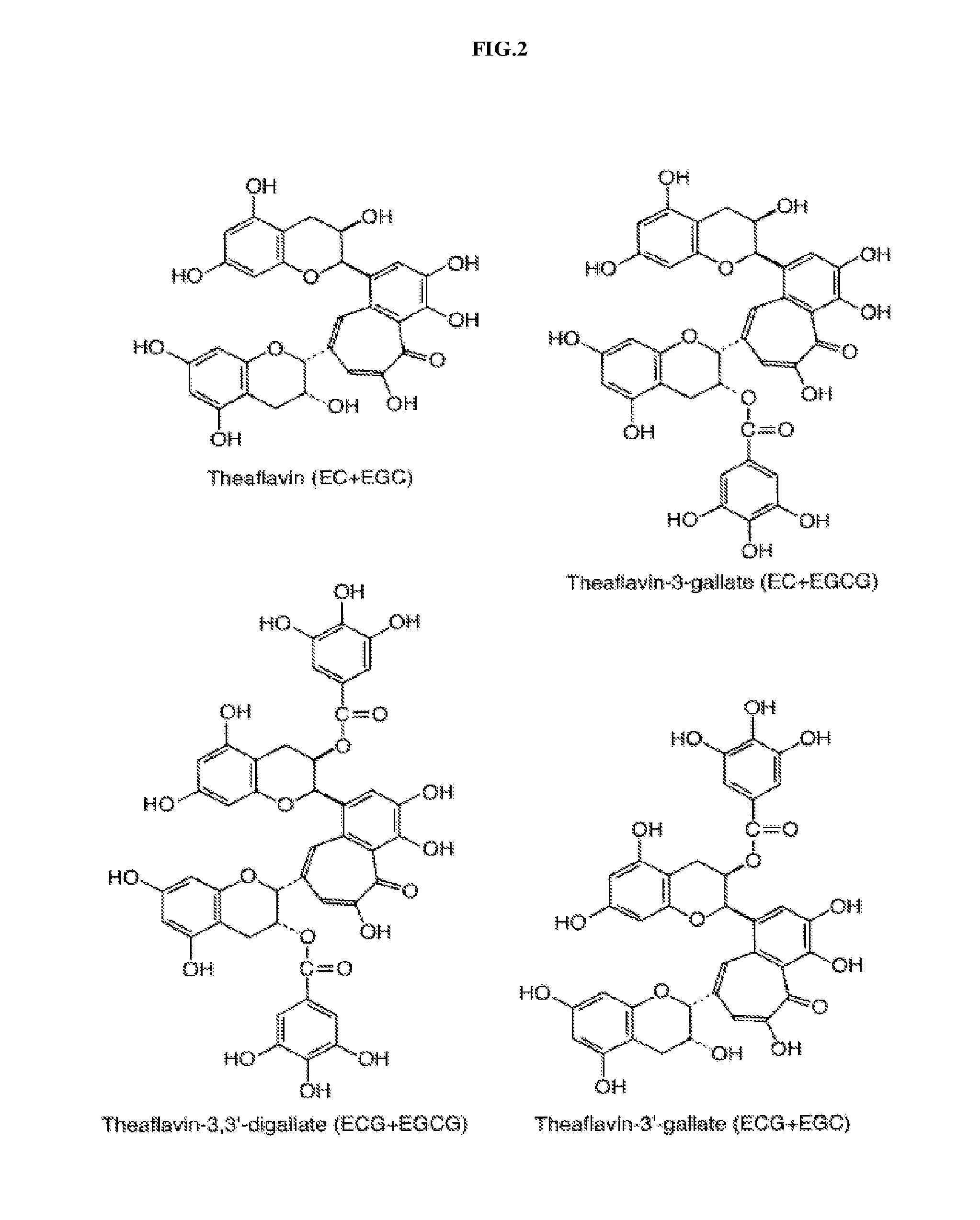Theaflavin Compositions, Production, and Method to Control Physiological Disorders in Mammals
a technology of compositions and flavonoids, applied in the field of theaflavin compositions, production, and theaflavin compositions to control physiological disorders in mammals, can solve the problems of affecting the survival rate of high-risk populations
- Summary
- Abstract
- Description
- Claims
- Application Information
AI Technical Summary
Benefits of technology
Problems solved by technology
Method used
Image
Examples
example i
Study of Neuraminidase (NA) Inhibitory Activity of Theaflavins
Materials and Reagents:
[0628]1. Theaflavins (60%), green tea polyphenols (98%) and epigallocatechin gallate (EGCG) extracted from tea leaf (Camellia sinensis), are manufactured and provided by Jiangsu Dehe Bio-Tech Co., Ltd., China;[0629]2. 14077, 14078 and 14079 are compounds from Center for National Drug Screening, Beijing, China;[0630]3. Oseltamivir is provided by Center for National Drug Screening, Beijing, China;[0631]4. 4-MUNANA is a substrate of neuraminidase for determining its activity;[0632]5. Influenza virus strain A / PR / 8 / 34 (H1N1) is from Center for Diseases and Control, Beijing, China;[0633]6. Cell: Madin-Darby canine kidney (MDCK) is from Center for National Drug Screening, Beijing, China.
[0634]Compounds tested and neuraminidase (NA) are suspended in the buffer solution (pH 6.5), then the fluorogenic substrate is added into the above reaction system to initiate the reaction, incubated for 60 minutes at tempe...
example ii
Inhibitory Effect of Theaflavins on Cytopathic Effects (CPE) Induced by Influenza Virus (H1N1)
Materials and Reagents:
[0637]1. Influenza Virus Strain: A / PR / 8 / 34 (H1N1), replicated by from Center for Diseases and Control, Beijing, China[0638]2. Cell Strain: Madin-Darby canine kidney (MDCK), from Center for National Drug Screening, Beijing, China.[0639]3. Culture Media: DMEM Culture Media (purchased from Gibco) with 10% serus[0640]4. Maintaining Culture Media: DEME culture media with 5 μg / ml of trysogen
Method:
[0641]1×105 / ml MDCK cells per well were seeded in 96-well plate in 1001 of culture media and incubated 24 hours at 37° C., 5% CO2. Cell monolayers were formed. Maintaining culture media was washed one time with PBS, and then culture containing A / PR / 8 / 34 (H1N1) virus, maintaining culture, maintaining culture containing testing compounds, and culture containing testing compounds and virus were added, respectively, incubated for 24 hours at 37° C., 5% CO2. Cell activity was measured ...
example iii
Evaluation of Neuraminidase (NA) Inhibitory Activity
Materials and Methods:
[0644]1. Samples: Theaflavins 60% (TF60%) and theaflavins 80% (TF80%); provided by Jiangsu Dehe Biotechnology Co., Ltd.; Sample Receiving Date: Feb. 1, 2010[0645]2. Other materials and reagents are same as the Study I.
Methods:
[0646]In enzymatic reaction system, a certain concentration of testing compound and neuraminidase from influenza virus are suspended in buffer solution of the reaction (pH 6.5), then the fluorogenic substrate of MUNANA is added to initiate the reaction, it is incubated for 60 min at 37° C., and the stopper solution is added to terminate the reaction. Under the conditions of excitation wavelength 365 nm and emission wavelength 455 nm, the fluorescence intensity is measured. Fluorescence intensity of the reaction system reflects the enzymatic activity. According to the decreased amount of fluorescence intensity, the inhibitory rate of testing compound against NA activity can be calculated.
R...
PUM
| Property | Measurement | Unit |
|---|---|---|
| height | aaaaa | aaaaa |
| thickness | aaaaa | aaaaa |
| thickness | aaaaa | aaaaa |
Abstract
Description
Claims
Application Information
 Login to View More
Login to View More - R&D
- Intellectual Property
- Life Sciences
- Materials
- Tech Scout
- Unparalleled Data Quality
- Higher Quality Content
- 60% Fewer Hallucinations
Browse by: Latest US Patents, China's latest patents, Technical Efficacy Thesaurus, Application Domain, Technology Topic, Popular Technical Reports.
© 2025 PatSnap. All rights reserved.Legal|Privacy policy|Modern Slavery Act Transparency Statement|Sitemap|About US| Contact US: help@patsnap.com



